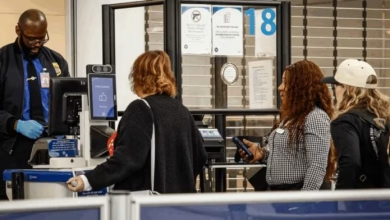Today in History: Mayflower Sets Sail from England for the New World

- During the voyage, the settlers signed the Mayflower Compact
- The Pilgrims endured a harsh first winter, resulting in the death of half the colonists
- The term “Pilgrim” for the Plymouth settlers emerged in the early 19th century
On September 16, 1620, the Mayflower departed from Plymouth, England, with 102 passengers on board, destined for the Americas.
The ship was originally headed for Virginia, where the colonists—comprising both religious dissenters and entrepreneurs—had received permission from the British crown to settle.
However, severe weather and navigational mistakes caused the Mayflower to veer off course, leading the “Pilgrims” to land in Massachusetts on November 21. There, they established the first permanent European settlement in New England by late December.
Of the Pilgrims, 35 were members of the radical English Separatist Church, who sought to escape the Church of England, which they deemed corrupt.
Ten years prior, these Separatists had fled to Holland in search of religious freedom but were dissatisfied with the economic prospects there.
Under the leadership of William Bradford, they decided to immigrate to Virginia, where an English colony had been established at Jamestown in 1607.
The Separatists secured financial support from a group known as the London Adventurers, who were promised a significant share of the colony’s profits.
About three dozen church members returned to England, where they were joined by roughly 70 entrepreneurs recruited by the London stock company to ensure the venture’s success.
In August 1620, the Mayflower departed from Southampton, initially accompanied by a smaller vessel, the Speedwell, which proved unseaworthy and necessitated two returns to port. The Mayflower set sail alone from Plymouth on September 16.
The challenging Atlantic crossing saw the 90-foot Mayflower encounter tumultuous seas and storms, which pushed it more than 500 miles off course. During the voyage, the settlers drafted and signed the Mayflower Compact, a key document establishing a “civil body politic” and laying the groundwork for American democracy. After a 66-day journey, the ship arrived on November 21 at the tip of Cape Cod, now Provincetown, Massachusetts.
Upon anchoring in Provincetown harbor, Captain Myles Standish led a party to scout for a suitable settlement site. Meanwhile, Susanna White gave birth to Peregrine White aboard the Mayflower, the first English child born in New England.
In mid-December, the explorers found a promising location across Cape Cod Bay, with cleared fields and abundant fresh water, which they named Plymouth.
Returning to Provincetown, the Mayflower anchored in Plymouth harbor on December 21. The settlers began constructing shelters to endure their harsh first winter in America shortly after Christmas.
The initial year of settlement was marked by high mortality, with half of the colonists succumbing to disease. However, by 1621, conditions improved, and Governor William Bradford organized a feast with neighboring Native Americans to celebrate the harvest.
Plymouth soon established treaties with local tribes, leading to economic growth and attracting more settlers. By the mid-1640s, Plymouth’s population had reached 3,000, though it was overshadowed by the larger Massachusetts Bay Colony to the north, which was established by Puritans in 1629.
The term “Pilgrim” to describe the Plymouth colonists only emerged in the early 19th century, derived from Governor Bradford’s reference to the “saints” as “pilgrimes” in a manuscript.
The term gained prominence when orator Daniel Webster referred to the “Pilgrim Fathers” during Plymouth’s bicentennial celebration in 1820, eventually becoming widely used.






